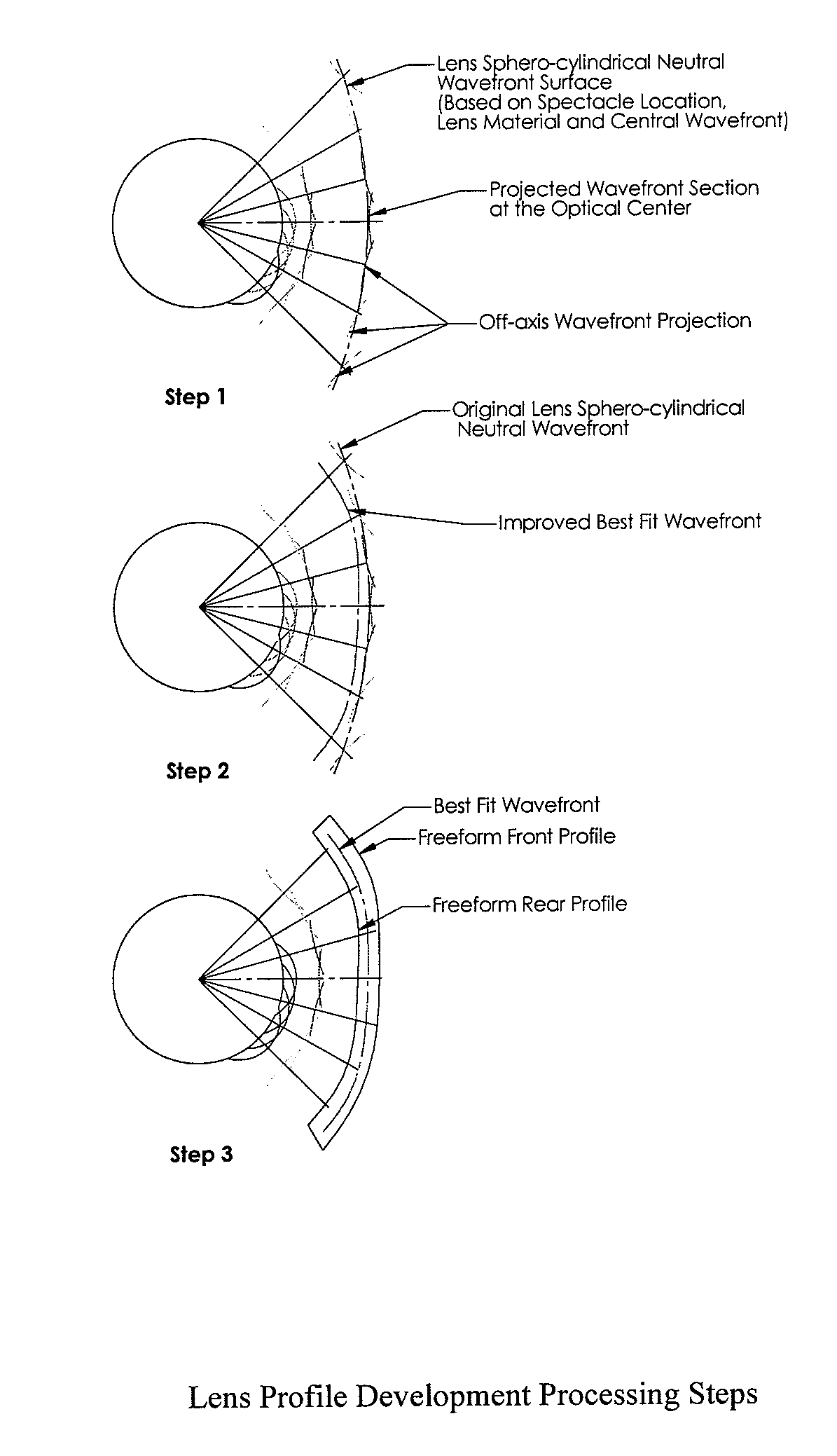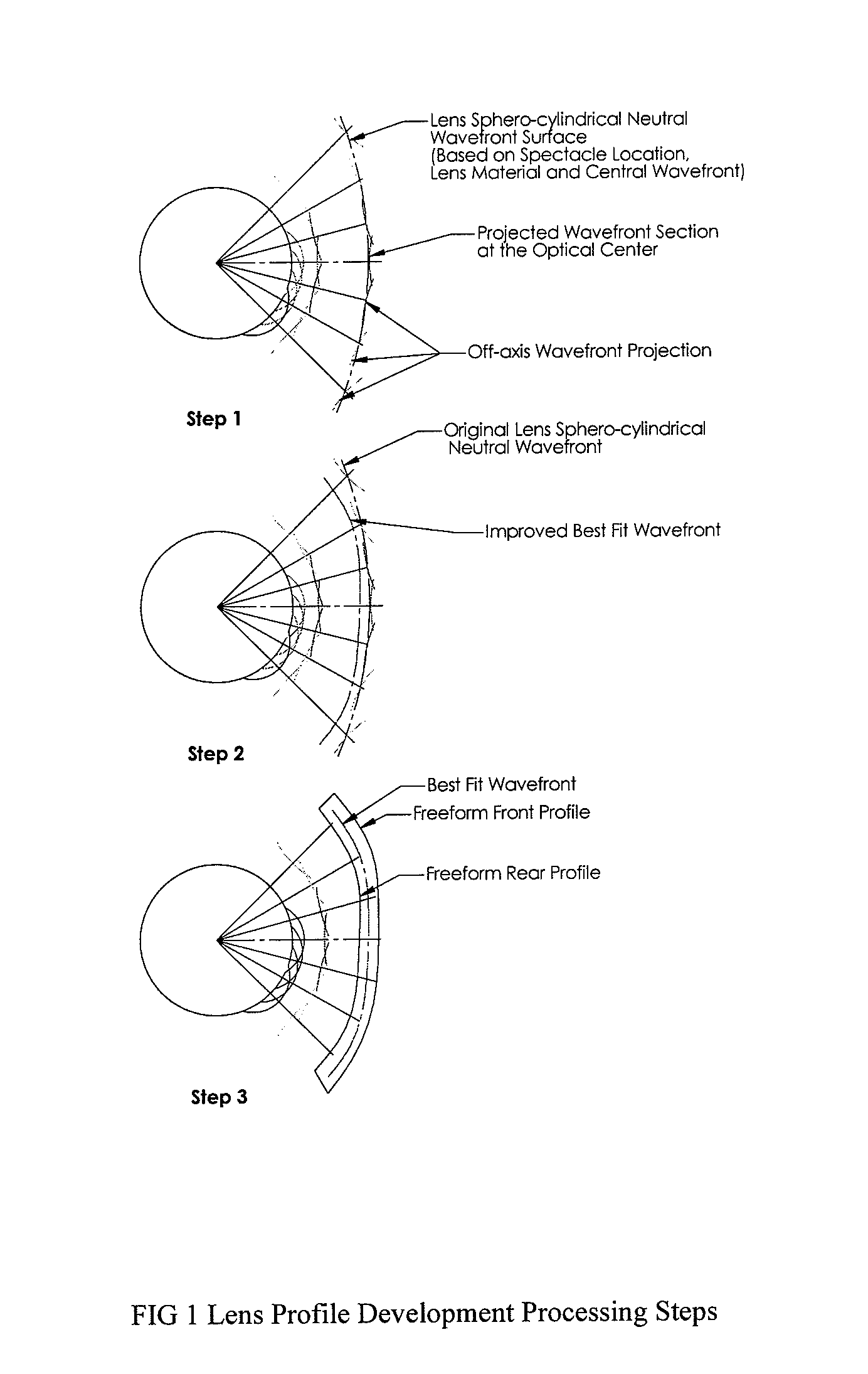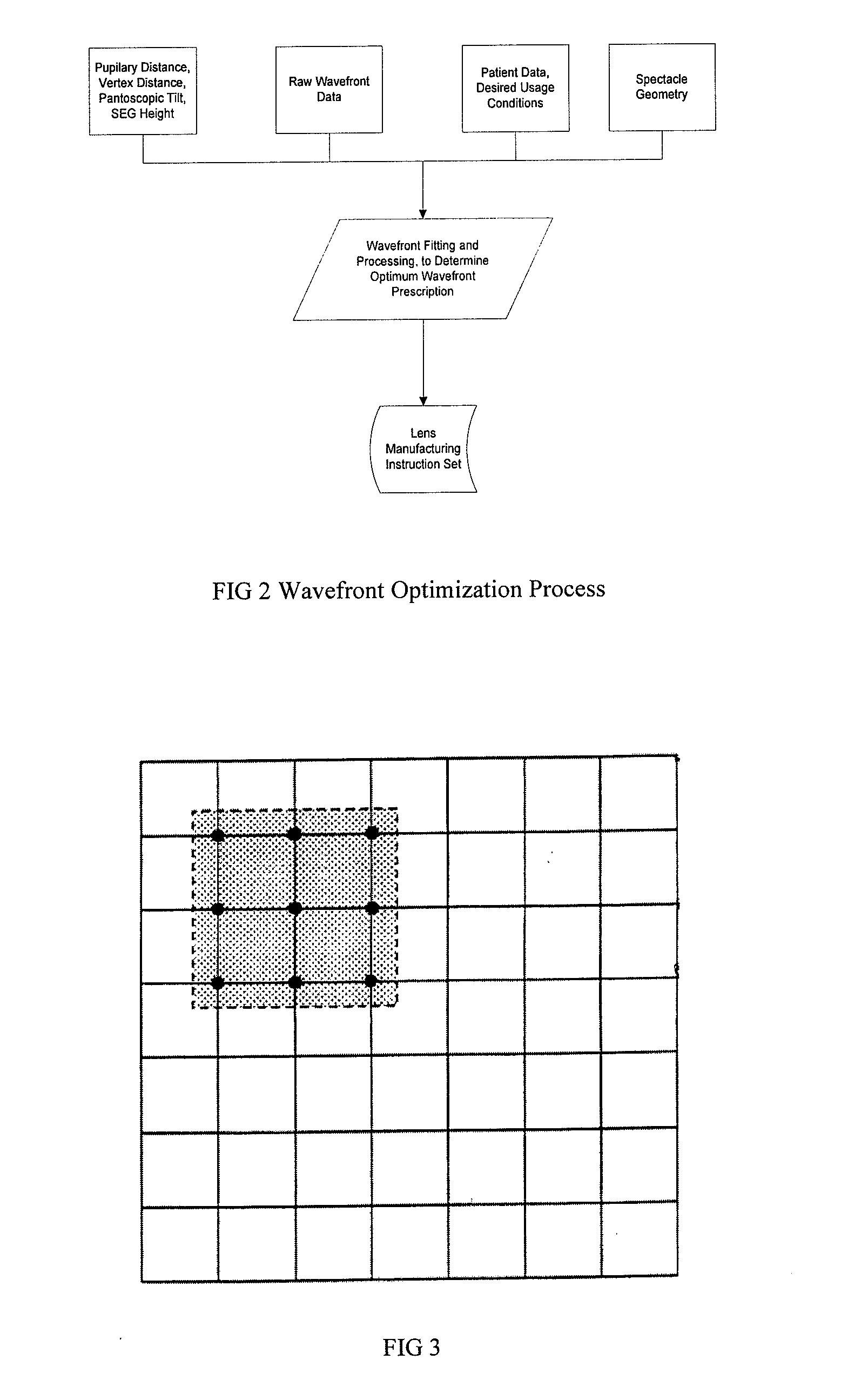Method of designing progressive addition lenses
a technology of progressive addition and lens, applied in the field of progressive addition lens, can solve the problems of many people experiencing distortion when looking off-center outside the central region, distortion around the near region of the lens,
- Summary
- Abstract
- Description
- Claims
- Application Information
AI Technical Summary
Benefits of technology
Problems solved by technology
Method used
Image
Examples
example 1
[0088]FIGS. 15A-B show the sphere and astigmatic maps for a customized progressive design for plano lens with +2D add power where the design is optimized for wide distance region and substantial near region with some astigmatism in near region. FIG. 15A is a representation of the cylinder power map with the distance and reading regions possessing 0 unit of power while the off-axis astigmatism adjacent to the power progression possesses −2.2 unit of power while the boundary region between the off-axis astigmatism and the distance region possesses −1 unit of power. FIG. 15B is a representation of the sphere power map with the distance region possesses 0 unit of power, the reading region possesses 2 unit of power and the boundary between the reading and distance region possesses 1-1.2 unit of power. The corridor length for this design can be varied to fit with in the frame with minimum segmental height of 16 to 22 mm. The progression of add power may range from +0.50D to +4.00D. The fi...
example 2
[0089]FIGS. 16A-B show the sphere and astigmatic maps for a customized progressive design for plano lens with +2D add power where the design is optimized for wide distance and astigmatic free near region. FIG. 16A is a representation of the cylinder power map with the distance and reading regions possessing 0 unit of power while the off-axis astigmatism adjacent to the power progression possesses −2.2 unit of power while the boundary region between the off-axis astigmatism and the distance region possesses −1 unit of power. FIG. 16B is a representation of the sphere power map with the distance region possesses 0 unit of power, the reading region possesses 2 unit of power and the boundary between the reading and distance region possesses 1-1.2 unit of power. The corridor length for this design can be varied to fit with in the frame with minimum segmental height of 18 to 22 mm. The progression of add power may range from +0.50D to +4.00D. The fitting cross can be located at 0, +2, or ...
example 3
[0090]FIGS. 17A-B show the sphere and astigmatic maps for a customized progressive design for plano lens with +2D add power where the design is optimized for substantial distance and near region and the reading region is free of astigmatism. FIG. 17A is a representation of the cylinder power map with the distance and reading regions possessing 0 unit of power while the off-axis astigmatism adjacent to the power progression possesses −1.8 unit of power while the boundary region between the off-axis astigmatism and the distance region possesses −1 unit of power. FIG. 17B is a representation of the sphere power map with the distance region possesses 0 unit of power, the reading region possesses 1.8 unit of power and the boundary between the reading and distance region possesses 1-1.2 unit of power. The corridor length for this design can be varied to fit with in the frame with minimum segmental height of 16 to 22 mm. The progression of add power may range from +0.50D to +4.00D. The fit...
PUM
 Login to View More
Login to View More Abstract
Description
Claims
Application Information
 Login to View More
Login to View More - R&D
- Intellectual Property
- Life Sciences
- Materials
- Tech Scout
- Unparalleled Data Quality
- Higher Quality Content
- 60% Fewer Hallucinations
Browse by: Latest US Patents, China's latest patents, Technical Efficacy Thesaurus, Application Domain, Technology Topic, Popular Technical Reports.
© 2025 PatSnap. All rights reserved.Legal|Privacy policy|Modern Slavery Act Transparency Statement|Sitemap|About US| Contact US: help@patsnap.com



